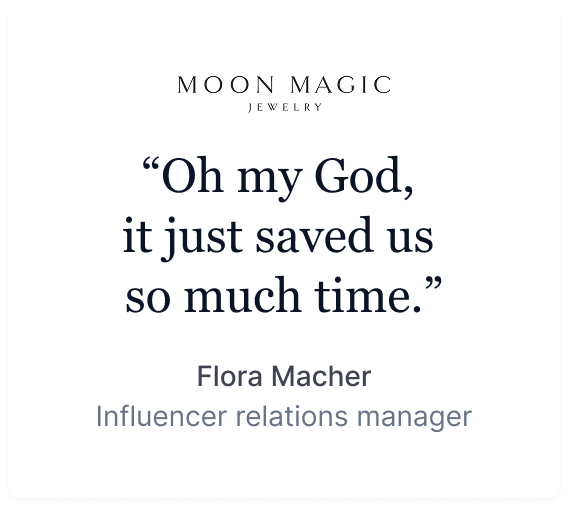Product
Customers
Resources
Free YouTube Engagement Rate Calculator

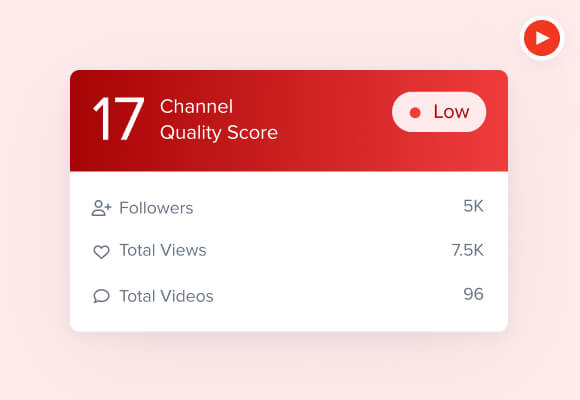
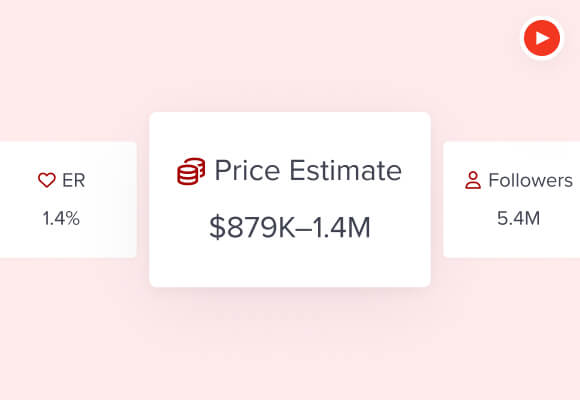
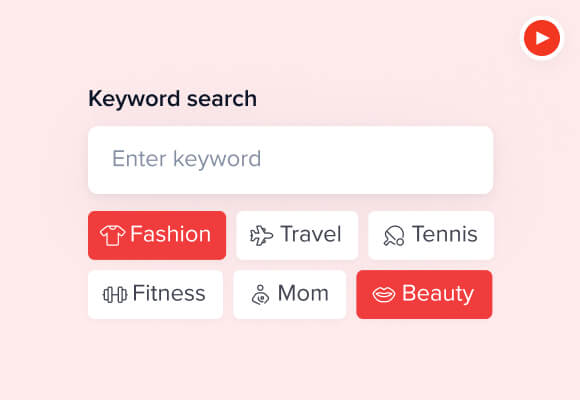
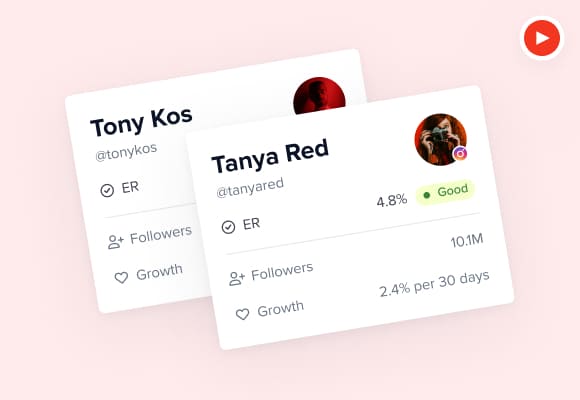
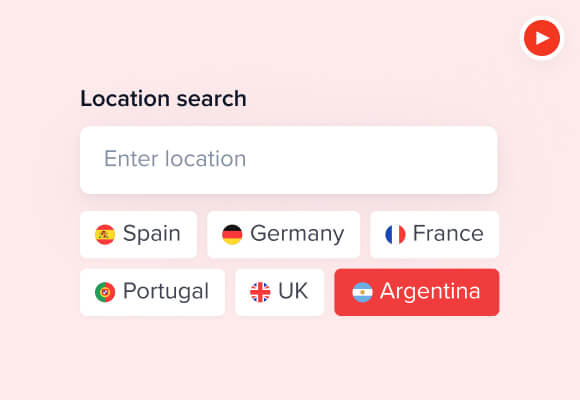
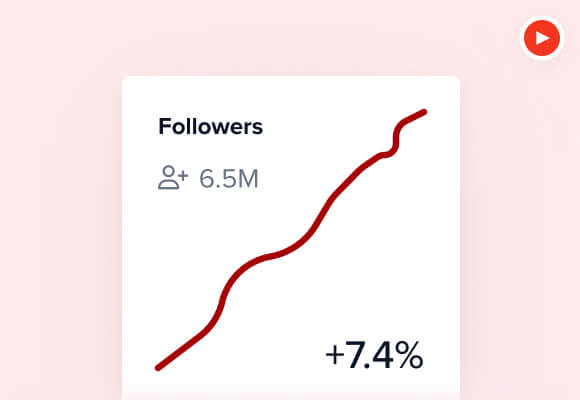
Youtube Engagement Rate Calculator Questions
What is an influencer’s engagement rate?
What is engagement rate on YouTube?
Why is the engagement rate important for YouTube channels?
The engagement rate is important for YouTube channels because it provides valuable insights into how well their content resonates with their audience. High engagement rates indicate that a large portion of their audience is actively engaged with their content. High engagement rates increase a channel’s visibility and growth, which, in turn, can generate more views, subscribers, and revenue.
At the same time, low engagement rates may indicate a need to improve the channel’s content and engagement strategies. The engagement rate of specific videos can help channels identify areas of improvement, which content is performing well, and which is underperforming.
Overall, tracking engagement rates is critical as it can allow channels to maintain high performance, recover from poor performance, and inform future content strategies for boosting engagement, growth, and search engine optimization.
What is a high engagement rate?
A high engagement rate indicates that a content creator is experiencing a high level of interaction between the creator’s content and their audience. High engagement rates are generally understood to be engagement rates that are above average for a certain niche, an industry, or even the social media platform as a whole. When an engagement rate is higher, it is typically considered a sign of an active and loyal audience.
The specific definition of a high engagement rate often varies by niche and industry. As a general rule of thumb, an engagement rate that’s over 10% can be deemed high.
Here’s an example:
If an account has 1 million views and earns 100,000 likes, comments, and shares, then the engagement rate is 10% (100,000 engagements / 1 million views x 100). This is considered a high engagement rate.
However, bear in mind that a high engagement rate is not the only key performance indicator for social media accounts. At the same time, it’s a valuable metric that allows content creators to monitor audience engagement and drive more-informed decisions about content.
What is a high engagement rate on YouTube?
For YouTube, a high engagement rate is one that earns an above-average engagement rate compared to all other channels within a certain niche, industry, or YouTube. An average engagement rate on YouTube depends on several factors: type of content, size of the audience, and level of competition.
Generally speaking, an engagement rate of 3–7% is considered good to very good, while an engagement rate that’s over 10% is exceptional. A high engagement rate can then be considered to fall between 7–10%.
Here’s an example:
If a YouTube channel earns 1 million views and receives 70,000 likes, comments, and shares, then its engagement rate is 7% (70,000 engagements / 1 million views x 100). This is a high engagement rate as it is not only above the average for most YouTube channels, but it also outperforms YouTube channels with a good engagement rate.
Just keep in mind that while a high engagement rate is extremely good, it’s also important to note the engagement rate to other channels in the same niche or industry in order to determine a YouTube channel’s relative performance.
What is a good engagement rate on YouTube?
A good engagement rate on YouTube is one that shows a level of interaction that is better than the average engagement rate yet not large enough to be considered high. For most YouTube channels, an engagement rate that falls between 3% to 7% is considered good.
Here’s an example:
If a YouTube channel earns 1 million views and receives 30,000 likes, comments, and shares, then its engagement rate is 3% (30,000 engagements / 1 million views x 100). This is a good engagement rate.
However, the definition of a good engagement rate can easily change over time, and it often varies for different YouTube channels, niches, and industries.
What is the average YouTube engagement rate?
The average YouTube engagement rate often differs greatly according to the niche, industry, channel size, and quality of content. However, most research suggests that the average engagement rate on YouTube is around 2%.
In other words, only 2 out of every 100 views that a YouTube video receives will result in a like, comment, or share. At the same time, the average engagement rate fluctuates, which can cause the benchmark for the average to be much higher or lower than 2%.
By using a YouTube engagement rate calculator, like our free tool, creators can get an accurate and up-to-date snapshot of their engagement rate, which they can compare to their niche’s or industry’s average. With this insight, they can work towards improving their engagement rate (if it’s lower than the average) or focusing on audience retention (if it’s higher than the average).
How do you calculate the engagement rate for YouTube?
A YouTube channel’s engagement rate is calculated by dividing the total number of engagements (likes, comments, shares, etc.) by the total number of views that the channel has received. The subsequent result is then multiplied by 100. To find the engagement rate for a specific video, simply divide the number of engagements that the video received by the number of views received, then multiply the result by 100. Engagement rate is expressed as a percentage, and it can be done manually (if you have access to the necessary data) or with a YouTube engagement rate calculator.
For your reference, this is the formula:
Engagement rate = ((Total number of likes + comments + shares + subscribers) / Total number of views) * 100
For example, if a video has 100 views, 10 likes, 5 comments, and 2 shares, the engagement rate is calculated as such:
((10 likes + 5 comments + 2 shares) / 100 views) * 100 = 17%
The higher the engagement rate, the more active the audience is.
How does the YouTube engagement rate calculator work?
The YouTube engagement rate calculator analyzes the number of likes, comments, and shares that a video or channel receives, then divides that number by the total number of views before multiplying by 100. This resulting percentage is the engagement rate.
By using a YouTube engagement rate calculator, you gain an accurate measurement of your channel’s or video’s performance, which you can compare to your niche or industry’s average. This informs you about your next steps to either improve or maintain your channel’s performance.
Are there any factors that can impact a video’s engagement rate on YouTube?
Several factors can affect a YouTube channel or video’s engagement rate:
- Content quality: Content that’s good quality, relevant, and engaging will receive more engagement than dull, irrelevant, and low-quality content.
- Video length: Videos that are too long can result in less engagement as viewers could lose interest before the video is over. On the flip side, videos that are too short may not contain enough content to provide the viewer with value, or content may be too condensed that it doesn’t allow the viewer to absorb the content.
- Target audience: Videos that target the right audience and match their interests are likelier to receive higher engagement rates.
- Thumbnail and title: Compelling thumbnails and intriguing titles can convince viewers to watch the video.
- Timing: Timing is important on YouTube. Videos that are published when audiences are more active are likelier to receive more engagement.
- Consistency: Publishing videos in accordance with a regular schedule and responding to comments and feedback will help foster engagement.
- Call-to-Action: Including a clear and compelling call-to-action can encourage viewers to like, comment, and share the video.
These are just some of the factors that can impact a video's engagement rate on YouTube.
Are there any limitations to using a YouTube engagement rate calculator?

